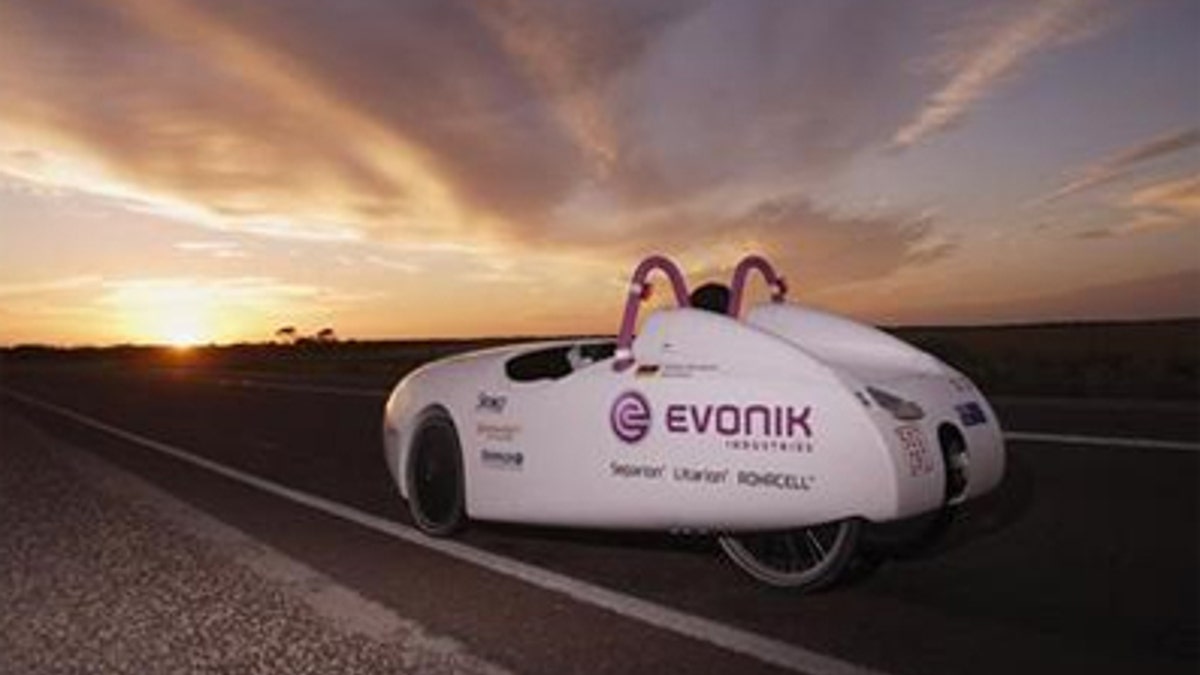
(Reuters)
A car powered primarily by wind and kites has made it across a vast swathe of Australia, enduring searing heat and freezing cold along the way -- and all for roughly $10 Australian.
The more than 3,100 mile journey of the "Wind Explorer" was the first major test for the prototype car, which its German inventors hoped would show that the technology already exists to power cars with renewable energy even through tough trips like this one.
"It is the first 'road worthy' wind-generated car that can travel these distances, and definitely the first kite-propelled car to drive on the roads anywhere in the world," said Dirk Gion, who with Stefan Simmerer built the vehicle.
"We wanted to show that if you build a light-weight electric efficient car, they are ready today."
The open, vaguely racer-style car has a carbon-fibre body and bicycle tires and was powered primarily by a lithium ion battery that was recharged at night by a mobile wind turbine, although a kite similar to a parasail was used at times instead.
While the car weighs only 177 pounds without the batteries, even with the batteries loaded it totals only around 440 pounds -- still far below the weight of an average car. It can reach speeds of over 55 miles per hour.
During the journey, which ended in Sydney on Monday, Gion and Simmerer hit temperatures of 122 F to 140 F as they crossed the Nullarbor Plains, raising concerns that the batteries would overheat.
Their comfort also suffered at times due to the fact that the car sits only 6 inches off the road, Gion said.
"The hot air was coming into the car almost burning our skin, then three days later we had 7 degrees (45 F) and we were freezing," he added.
Winds occasionally failed, forcing the pair to plug the car into the power grid at campsites and launderettes along the way to recharge. They ultimately ran 1,540 miles on wind power, 298 miles on kite power, and 1,304 miles on electricity.
"The component of electricity powered from the grid cost about $10 Australian for the whole trip," Gion said, adding that while the car still isn't ready for practical use he has great expectations for the future.
"I hope within the next ten years, you see a big development there."